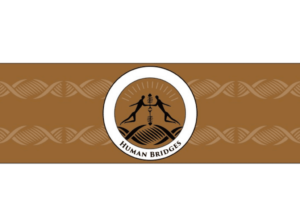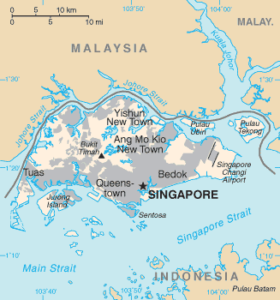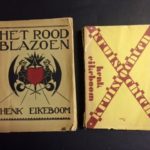Parallels Between Archaic Entrepots And Modern Offshore Banking Centers

Michael Hudson
05-12-2024 ~ Offshore banking and tax-avoidance centers are nothing new; they’ve been with us for millennia.
A discussion of the origins of urbanization may provide some insight into the character of modern social problems by highlighting the long historical dynamic at work. It may not be out of place here to point out that anti‑states are well known in the modern world, above all in what the U.S. Federal Reserve Board classifies as eleven offshore banking centers. Five such enclaves are in the Caribbean: Panama, the Netherlands Antilles (Curaçao), Bermuda, the Bahamas, and the British West Indies (Cayman Islands). Three enclaves—Hong Kong, Macao, and Singapore—were founded to conduct the China trade. The remaining three are Liberia, Lebanon, and Bahrain at the mouth of the Persian Gulf—the island which Bronze Age Sumerians called Dilmun when they used it to trade with the Indus valley and the Iranian shore.
Nothing would seem more modern than these offshore banking and tax-avoidance centers. They are the brainchildren of lawyers and accountants in the 1960s seeking to weave loopholes into the social fabric—to provide curtains of secrecy (“privacy”) to avoid or evade taxes, and to serve as havens for ill‑gotten earnings as well as to facilitate legitimate commerce.
Whereas modern nation‑states enact laws and impose taxes, these enclaves help individuals evade such regulations. And whereas nation‑states have armies, these centers are the furthest thing from being military powers. They are antibodies to nationhood, yet more may be learned about Ice Age, Neolithic, and even Bronze Age gathering and meeting sites by looking at these modern enclaves than by examining classical city‑states such as Athens and Rome. Read more
Trump Loyalists Preview Strategies To Upend 2024 Election
 05-10-2024 ~ Not just challenging voters’ credentials in battleground states. But attacking every step in running elections.
05-10-2024 ~ Not just challenging voters’ credentials in battleground states. But attacking every step in running elections.
As the 2020 presidential election entered its final stretch, Christina Bobb was not just covering it as a TV newswoman for the pro-Donald Trump One America News Network (OANN). The tall, dark-haired, clear-speaking ex-marine and lawyer was working to overturn it.
Bobb believed that Democrats and election officials colluded to fabricate thousands of voter registrations, illegal voters, forged ballots, and finessed the vote count until Joe Biden was the victor in 2020’s battleground states.
Yet it was Bobb and Trump loyalists who were feverishly plotting and pushing to alter the presidential election’s outcome, as she detailed in her 2023 book, Stealing Your Vote: The Inside Story of the 2020 Election and What it Means for 2024.
Publicly, Bobb kept reporting for OANN. Under the radar, she “joined” Rudy Giuliani and others in Trump’s orbit who pursued ways to nullify the results. She wrote that she was on the call with Trump when he urged Georgia Secretary of State Brad Raffensperger to “find 11,780 votes.” Bobb said that she coordinated “the litigation efforts in Arizona, Michigan, and New Mexico,” including, apparently, a slate of fake Electoral College members who forged and sent paperwork to Congress certifying that Trump had won Arizona.
In April, Bobb and 17 others were indicted on multiple felonies in that electoral hijacking scheme by Arizona Attorney General Kristin Mayes, a Democrat. Only weeks before, on the same day Trump secured the 2024 Republican nomination, Bobb was named the Republican National Committee’s senior counsel for election integrity. Beyond the surreal twist that a politico indicted for attempting to overturn a swing state’s presidential vote will now lead a national party’s efforts to police elections, Bobb’s book previews the lawfare and conspiratorial mindset that is already shadowing 2024’s presidential election. Read more
Will the Golden Age For Corporate Shareholders Ever End?

John P. Ruehl – Source: Independent Media Institute
05-05-2024 ~ Shareholders have assumed enormous influence over U.S. corporations over the last few decades. Despite their firm hold, shifts are underway that could alter the domestic corporate landscape.
On April 3, 2024, Disney CEO Bob Iger officially fended off the attempt by institutional investor Nelson Peltz and his hedge fund Trian Partners to secure two board seats. During the affair, Disney faced pressure from proxy advisory firm Institutional Shareholder Services to support Peltz’s initiative. While Iger prevailed, the costliest board fight in history underscores the significant influence of shareholders in shaping the fates of corporations.
Historically, U.S. corporate power was concentrated among executives, though with varying degrees of influence held by workers and other stakeholders. However, over the last century, U.S. corporations increasingly oriented themselves around their stock price and the imperative to maximize shareholder value. This mindset has now firmly entrenched itself within U.S. corporate culture and continues to shape their decisions and priorities.
Until the early 20th century, shareholders wielded minimal influence over U.S. corporations, with notable changes instigated by industries such as railroad conglomerates. To sidestep antitrust accusations and manipulate competition, for example, railroad companies created “communities of interest” by buying shares in one another, frequently installing their financiers and bankers on targeted companies’ boards. However, increased antitrust enforcement from the Supreme Court discouraged these practices by 1912. Read more
Seeing Red: Our Ancient Relationship With Ocher And The Color of Cognition
 05-03-2024 ~ Extensive ocher use reflects the culture and cognitive abilities of early humans, who inherited an affinity for red from primate ancestors.
05-03-2024 ~ Extensive ocher use reflects the culture and cognitive abilities of early humans, who inherited an affinity for red from primate ancestors.
Twenty-three million years ago, our distant ancestors gained trichromatic color vision through means of a random genetic mutation. Trichromatic color vision and trichromacy refer to the ability to perceive color through three receptors in the eye, known as cones, which are sensitive to different wavelengths of visible light. It has been assumed that primates ancestral to humans had two cones at the start of their lineage; the duplication and modification of genes coding for one of the two created another distinct, separate cone. Gaining a third cone allowed for the perception of red and other colors with long wavelengths in addition to the two preexisting receptors for blues and greens with shorter wavelengths—red was entirely unknown to primate species before this mutation, and the ability to see red remains rare among other mammals. Exceptions to mammalian dichromacy, the state of having two cones, are uncommon. Some primates lost one of their cone receptors, becoming monochromats. Having a single cone, monochromats like the nocturnal owl monkeys (genus Aotus) perceive light intensity in shades of gray without the ability to differentiate color values. Others, including the ancestors of modern apes, monkeys, and humans, happened to gain a third cone.
Michael H. Rowe, professor emeritus of neuroscience at Ohio University, confirms that random processes were involved in the evolution of primate trichromacy in his study of the underlying neurophysiological mechanisms, and outlines the two dominant theories for the maintenance of a third cone among primates. One longstanding theory is that of enhanced fruit detection among diurnal primates, who are most active during the daytime. According to this theory, improved discernment of red fruits against green foliage led to a direct increase in efficiency when foraging for nutritious food. The second theory, however, suggests it was the consumption of leaves rather than fruit that more strongly influenced routine trichromacy. This alternate “young leaf” hypothesis emphasizes the importance of enhanced color vision when selecting nutritious leaves over their less beneficial counterparts, especially at times when fruit is scarce and surviving off of leaf consumption becomes critical. Rowe’s findings and the newer “young leaf” theory also align with the later evolution of trichromatic vision in the howler monkey, a New World primate.
New World primates like the howler monkey and Old World primates, which include humans and apes, are two major groups within the order Primates that differ in anatomical features and geographic distribution. Since their last common ancestor did not have trichromatic vision, the trait evolved in both Old and certain New World species through convergent evolution. This occurs when similar traits evolve among distantly related species, usually due to similar environmental pressures and advantages to the trait.
Further down the evolutionary timeline, rocks and minerals became the cornerstones of technological advancement among hominins. Within the range of widely accessible raw materials, one pigment stands out with its broad spectrum of color: ocher. Ocher varies in shade depending on its chemical and structural composition, appearing from light yellows and rusty browns to deep red-purple hues. Red ocher, for example, gains its color from an abundance of an iron oxide called hematite. Read more
PVV Blog 7 ~ Remembrance Day 2024
 05-03-2024 ~The Netherlands commemorates the victims of the Second World War annually on May 4th. This remembrance takes place through a ceremony held at the central square ‘de Dam’ in Amsterdam.
05-03-2024 ~The Netherlands commemorates the victims of the Second World War annually on May 4th. This remembrance takes place through a ceremony held at the central square ‘de Dam’ in Amsterdam.
During the yearly Remembrance Day event, wreaths are laid at the monument by the chairpersons of the Senate and House of Representatives. This year, Martin Bosma, a member of the Party for Freedom, will lay the wreath on behalf of the House of Representatives. In 2023, Bosma was democratically elected as the chairman of the House of Representatives, representing the ideological stance of the Party for Freedom. Throughout this series, I heavily draw upon his book ‘De schijn-élite van de valse munters. Drees, extreem rechts, de sixties, nuttige idioten, Groep Wilders en ik’ published in 2010. Below, I provide an analysis of several quotes from Bosma’s book, followed by commentary on these quotes.
Quotes about Christianity
‘There are few things the Dutch can be happier with than the Christian background of their country. Almost all of our crucial achievements have a relationship with Christianity. Democracy, separation of church and state, tolerance, but also values such as diligence and efficiency’ (p. 94).
‘Monoculturalism, supplemented with Christian-Western values such as diligence, discipline, honesty and efficiency, created an unparalleled high point in human history’ (p. 188). Read more
Singapore: Lawrence Wong To Lead Amid Economic And Political Challenges

Geography of Singapore – en.wikipedia.org
05-03-2024 ~ Deputy Prime Minister Lawrence Wong is set to become Singapore’s next leader on May 15, succeeding Lee Hsien Loong. His leadership will be closely watched as he takes the helm.
Singapore has announced that Deputy Prime Minister Lawrence Wong will take over as the country’s next leader on May 15. Wong, 51, has garnered unanimous support from lawmakers within the People’s Action Party (PAP). He will succeed Lee Hsien Loong, who has held the top job for 20 years.
Wong, who earned praise for his management of the island’s pandemic response, has been regarded as Lee’s successor since April 2022. During this time, the ruling party selected him to lead the “4G” or fourth generation of leaders in Singapore’s political parlance—politicians the party aimed to have govern the country in the future.
Before that, Heng Swee Keat, a former central bank chief and education minister and choice for the post of Prime Minister, suddenly stepped aside in 2021, throwing the party’s succession plans into disarray.
The term “generation” suggests a significant transition rather than a complete overhaul of cabinets, as some ministers served under more than one prime minister. The first prime minister, Lee Kuan Yew, led the first generation of leadership from 1965 until 1990. He was succeeded by Goh Chok Tong, who held the premiership for the following 14 years until 2004 when Lee Hsien Loong assumed leadership. Read more


